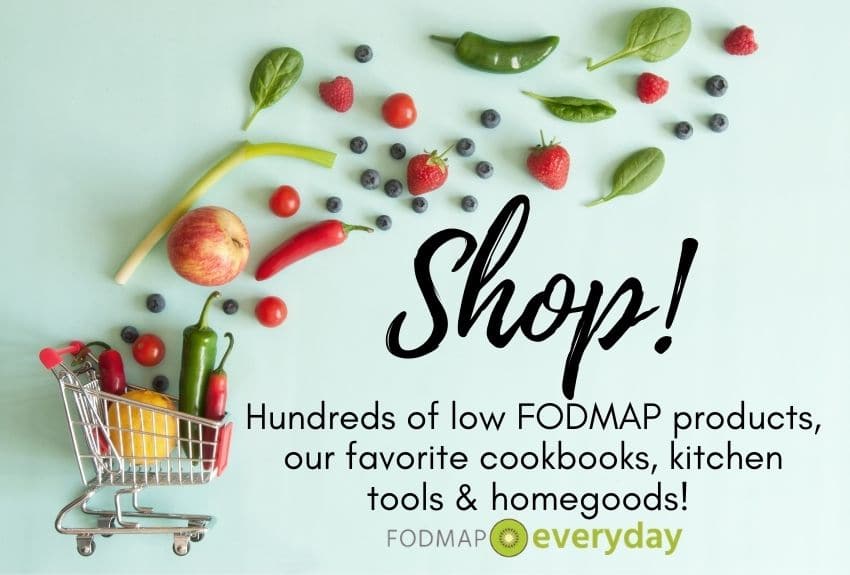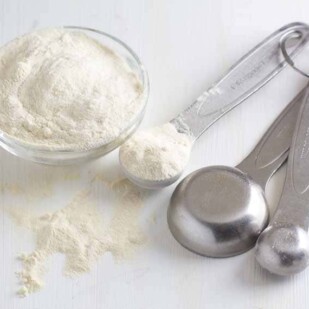Cakes? Cookies? Coffee cakes, brownies, bars, doughnuts and bread…you CAN have all of these luscious baked goods while following the low FODMAP diet. Any kind of baking demands attention to detail for best results, and it begins with your ingredients. Here are our 10 Essential Low FODMAP Baking Ingredients.
These are my essential ingredients that I keep in our Test Kitchen. I use them time and again to whip up all kinds of sweet and savory treats.
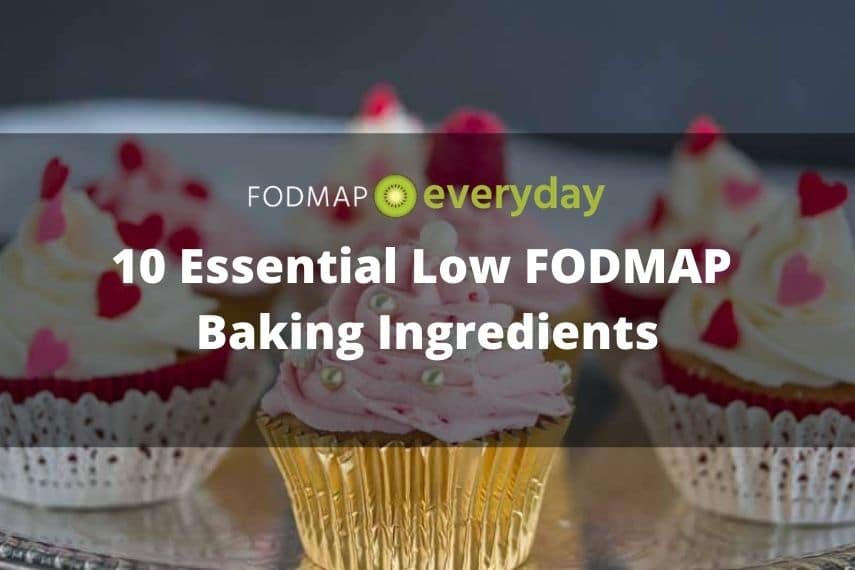
If you love desserts and to bake, have no fear! Just because you follow the low FODMAP diet does not mean that you have to go without. I have a long history as a dessert maker, having owned a bakery with Robin, and the majority of my books are on sweets and baking.
Are You A Baker?
If you are a serious baker, we highly suggest you check out our 275-page e-book, Low FODMAP Baking. It has unique content not found here on the site, with loads of recipes, tips, tricks and info to help you be the best low FODMAP baker you can be.
Please note that this list is not geared towards vegan baking. For info on substitutions for low FODMAP vegan baking, please refer to our article Vegan & Low FODMAP Series: Converting Conventional Low FODMAP Recipes To Vegan Recipes.
As always, please refer to your Monash app and FODMAP Friendly smartphone apps for specific serving size recommendations.
10 Essential Low FODMAP Baking Ingredients
1. Butter

Butter is a fat and therefore low FODMAP; yes, it is low enough in lactose to be considered free of FODMAPs according to Monash University. I use unsalted butter in the Test Kitchen and when recipes call for it, please use it. Substituting another fat, be it margarine, solid coconut oil or a liquid oil will not provide the same results texture-wise, or flavor-wise.
We use conventional butter, such as Land O’ Lakes, which has 80% butterfat. Do not substitute higher fat European butters, unless called for, as they will alter the recipe – usually not for the better unless the recipe has specifically been developed for that fat level.
Buy butter when it is on sale and keep some in the freezer.
2. Chocolate & Cocoa
Chocolate
How you can incorporate chocolate and cocoa into your low FODMAP cooking and baking is an entire subject unto itself. Please do check out the following articles:
- All About Dark Chocolate & The Low FODMAP Diet
- All About Milk Chocolate & The Low FODMAP Diet
- All About White Chocolate & The Low FODMAP Diet
- All About Cocoa & The Low FODMAP Diet
I am picky about my chocolate and cocoa, but I have tried to pare it down for you.
Don’t Melt Chips!
Use bulk and bar chocolate for melting; do not try and melt chips. They are formulated to hold their shape. The exception is disc-shaped chocolate, often called “melting discs”, “callets” or feves”, which melt very well.
Use bulk and bar chocolate for melting; do not try and melt chips. They are formulated to hold their shape. The exception is disc-shaped chocolate, often called “melting discs”, “callets” or feves”, which melt very well.
Cacao Percentage Matters
Use the cacao percentage called for in the recipe. If the recipe says use a 55% cacao mass chocolate and you use 70% and do not like the results, you have your answer. They will not act the same in a recipe, and a swap can ruin a recipe.
You might buy chocolate as you need it, but I tend to keep unsweetened chocolate, semisweet bar chocolate and chips on hand so that I can bake at a moment’s notice.
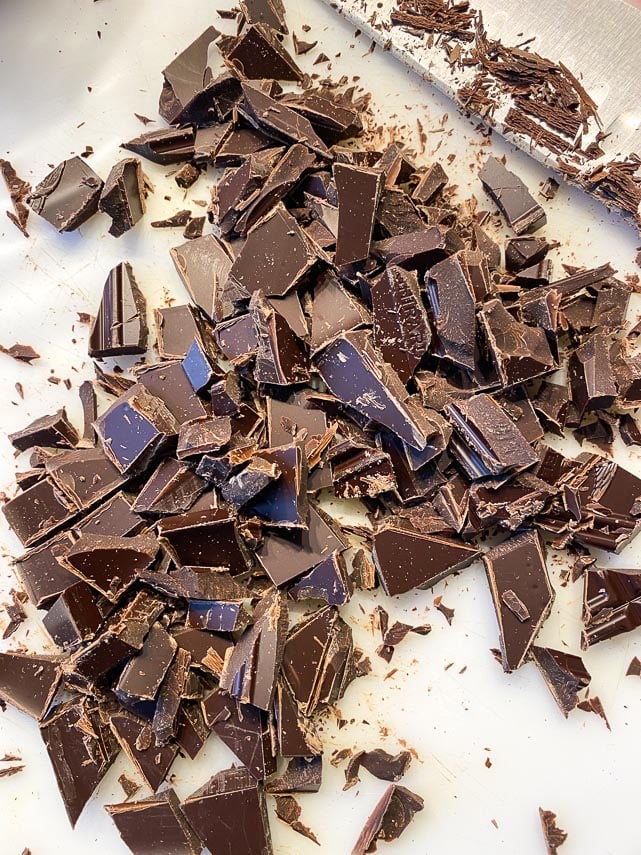
Here are what I like to keep in my pantry.
- Unsweetened, such as Guittard
- Ghirardelli dark chips (60%)
- Ghirardelli Semisweet (47%)
- Guittard wafers (66%)
- Callebaut bar chocolate (60%)
- Valrhona Guanaja (70%)
These are the milk chocolates and white chocolates I like, but as they do not have as long of a shelf-life, I tend to buy as I need them. If you are more of a milk chocolate and white chocolate lover, be sure to check out our Milk Chocolate Chunk Cookies with Orange and Pecans and also our Espresso White Chocolate Chunk Cookies with Hazelnuts.
- Valrhona Ivoire white chocolate, bar or discs
- El Rey Icoa white chocolate, bar or discs
- Callebaut white block
- Valrhona milk chocolate callets
- Callebaut milk chocolate
Cocoa
There are basically two kinds of cocoa powder available to the baker: natural and alkalized, which is often called Dutch-processed. In its natural state, cocoa has a fair amount of acidity, typically a pH of about 5 or 6. Recipes that call for and use natural cocoa will also usually call for baking soda, which will react with the acidic cocoa, neutralizing it and providing the right leavening power.
Alkalized, or Dutch-processed cocoa, has a pH of about 7 to 8. Bakers do not consider these two types of cocoa to be interchangeable and neither should you in baking recipes. If you are using cocoa to dust on top of a dessert or a truffle, you can use either, but if you are incorporating it into a recipe, follow all the steps, including using the ingredients that are called for.
Black cocoa is a very dark cocoa. It is alkalized, but it does not work well if substituted 1 for 1 for more typical Dutch-processed cocoa. It has the flavor and color of “Oreos”. I will often use it in recipes as part of the cocoa called for.
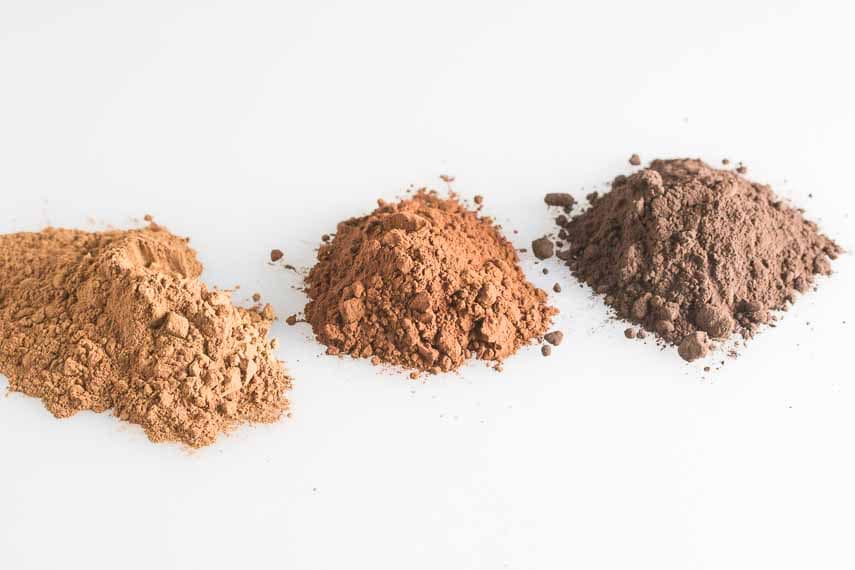
Please do read our article All About Cocoa & FODMAPs. It is an incredibly informative article. Unfortunately, Monash University has two entries on their app, one for cocoa and one for “cacao”, and what they lab tested showed different results. It is a complicated situation explained in the article linked above and I have been in contact with Monash to discuss their findings. In the article you will read why any product calling itself “cacao”, which happens a lot with organic products, raises suspicion with me and others who work in the chocolate field.
For cocoa I always keep Valrhona and Bensdorp Dutch-processed on hand as well as natural cocoa, usually Ghirardelli, Hershey’s or Scharffen Berger. If you are a cocoa lover, consider black cocoa as well; I buy mine from King Arthur.
Note that cocoa in our recipes is sifted before measuring, and chocolate always melts better if finely chopped first.
3. Eggs
Eggs add structure, volume and moisture to baked goods and desserts and we are never without. All of our recipes use large eggs; please do not substitute a different size. Look for Grade AA. White or brown does not matter.
You will often see a recipe calling for room temperature eggs. Simply place the eggs, in the shell, in a bowl with very warm water for a few minutes. Then you can proceed with the recipe. Temperature of ingredients does make a difference.
4. Dairy
The low FODMAP diet is not a dairy-free diet, but it is lactose-free. Luckily there are many lactose-free dairy products out there for us to use.
Please use what is called for in the recipes for best results.
When I use dairy-milk it is almost always whole or full-fat, and is usually specified to be room temperature. Low fat and/or cold milk will not give you the same results.
Many hard cheeses, like cheddar and Parmesan, are low FODMAP and you can use the conventional choices. Read more in our article Is Cheese Low FODMAP?, which teaches you how to tell if ANY cheese is low FODMAP.
When it comes to the high(er) FODMAP softer dairy and cheeses like cottage cheese, ricotta, sour cream and cream cheese, I most-often use a lactose-free equivalent. We also have a recipe for Lactose-Free Ricotta, which is much easier to make than you would ever expect.
With cream cheese in particular I use Green Valley Creamery brand and it “acts” differently from other products. As always, please use what is called for in the recipes. If you do not, I cannot guarantee results.
Cream! Whether are talking heavy cream, whipping cream or half-and-half, some folks have access to lactose-free and some do not. We have an article called DIY Lactose-Free Dairy that you should read and also be sure to read All About Cream & FODMAPs, which explains the equivalent fat content and differing nomenclature of creams in the U.S., Australia and the U.K.
5. Leaveners
Baking powder and baking soda are common baking ingredients and do come into play with low FODMAP baking. These are what are referred to as chemical leaveners and they need to be fresh in order to ensure that your biscuits, muffins and cakes rise the way they should.
- Baking soda is a chemical leavener consisting of pure sodium bicarbonate. When it comes in contact with an acid (lemon juice, buttermilk, etc.), the two substances react to produce carbon dioxide, a bubbly gas that causes baked goods to rise. To prompt this reaction, recipes that call for baking soda also call for one or more acidic ingredients including yogurt, buttermilk, lemon juice, sour cream – or even natural cocoa, which is acidic.
- Baking powder is a combination of sodium bicarbonate, acid and some sort of starch (often cornstarch) to keep the two ingredients dry and non-reactive in storage. Baking powder is used in recipes that lack acidic ingredients.
Not all baking powder is gluten free. We specify using gluten-free baking powder if you are following a gluten-free diet. Read the labels!
For baking powder I recommend double-action, aluminum free baking powder such as Rumford. Make sure to keep track of the use-by date and keep it in its airtight container at room temperature.
For baking soda, I use Arm & Hammer brand and I transfer it to an airtight container (if it doesn’t come in one), which also happens to facilitate measuring. I keep this at room temperature, too.
You can test the freshness (and therefore leavening power) of baking soda or baking powder. To test baking soda, place a few tablespoons of vinegar in a small dish or measuring cup, then stir in about a teaspoon of soda. The mixture should fizz vigorously if the baking soda is still active. If there’s little to no reaction, it’s time to buy a new container.
To test baking powder, repeat procedure described above but use warm water in lieu of vinegar.
For yeast, follow individual recipe recommendations for dry active yeast or instant yeast. Either way I like Saf Yeast brand. You can store yeast in the refrigerator or at room temperature and always check use-by dates.
6. Low FODMAP Gluten-Free Flour

When it comes to flour and low FODMAP baking and dessert making there is one flour that I consider a “must-have”, and two others that will help you get almost any job done, and done well.
You will note that the flours mentioned here are all blends, and they contain xanthan gum. Both of these points are important. Blends allow the manufacturer to combine various flours and starches to create a singular product that highlights the best of what they all have to offer. It allows you to not have to stock several different products.
The xanthan gum provides some of the texture that is missing from finished baked goods made with gluten-free flours or blends.
Our #1 choice for a conventional all-purpose flour replacement is Bob’s Red Mill Gluten-Free 1-to1 Baking Flour. I have tried them all and without a doubt, this flour has consistently proven itself.
Our #1 choice for a conventional all-purpose flour replacement is Bob’s Red Mill Gluten-Free 1-to1 Baking Flour. I have tried them all and without a doubt, this flour has consistently proven itself.
If you are an avid baker and want to stock a flour that is more equivalent to a “cake flour”, then I recommend King Arthur Gluten Free Measure For Measure Flour. It has a more finely milled texture than our recommended all-purpose blend and yields a softer crumb, similar to a cake flour. I do not consider them equally swappable in recipes.
Then for certain recipes, all yeast-based as it so happens, like our Cinnamon Rolls and Pecan Sticky Buns, I highly recommend Better Batter. It has the unusual addition of pectin, which I find essential in these cases. In fact, in my opinion you cannot make these recipes without it. Period.
For a more in depth look at flour in general, read our article Choosing A Low FODMAP All-Purpose Flour and if you are looking for do-it-yourself, we have two blends: one with xanthan gum and one without.
7. Salt
For baking and dessert making I use table salt, while our savory cooking recipes use Diamond Crystal Kosher Salt. Salts measure differently, and taste different as well – including how “salty” they are. Use what is called for in recipes.
I do not use fine-grained sea salt. I find its salinity too aggressive.
8. Sweeteners
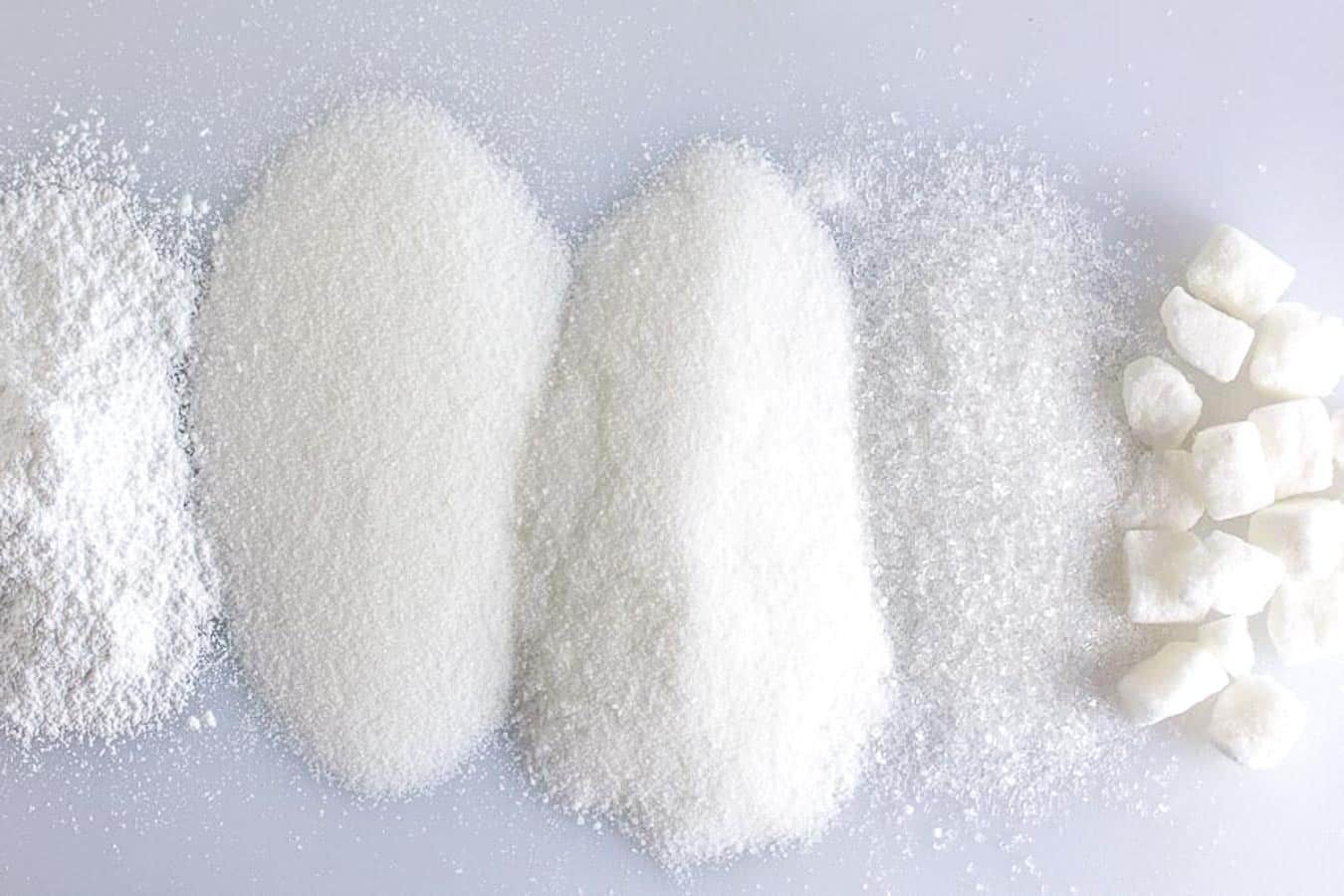
There are many low FODMAP sweeteners and the ones we use the most are white sugar, brown sugar, maple syrup and light corn syrup. Those are our recommended basics for Low FODMAP baking and dessert making. Corn syrup is often used in candy-making and is not the same as high fructose corn syrup (HFCS).
Since we are really into baking, we keep a coarse turbinado sugar at hand as well, but it is in no way a “basic”.
We also keep rice malt syrup, golden syrup, molasses and honey in the Test Kitchen to use in small low FODMAP amounts.
Rice malt syrup, which contains no FODMAPs, is a great substitute for liquid sweeteners in conventional recipes when high(er) FODMAP honey or molasses are called for, or when you want a subtle sweet flavor. For recipes calling for maple syrup, you could use half rice malt syrup (also called rice syrup or brown rice syrup) to reduce the sweetness level.
For more info, please read our Explore An Ingredient: Sugar, Maple Syrup and also Is Honey Low FODMAP?
9. Vanilla, Spices, Flavorings & Extras
Extracts
When it comes to vanilla and almond extracts, we like to use pure, not artificial. While you could use lemon extract (it would not be a FODMAP issue), I am not partial to its flavor and do not keep it in my pantry.
Spices
As for spices, make sure yours are fresh – as in your dried ground cinnamon, ginger, cloves etc. are fresh and not stale. Buy small amounts that you will use up in 6-months.
When it comes to nutmeg, in particular, I like to grate it fresh and the recipe amounts reflect that. Freshly ground nutmeg is very fluffy and measures differently from pre-ground. Use a small rasp-style grater for whole nutmeg.
Flavorings & Extras
Instant Espresso Powder
While it is not a must, I do like to keep instant espresso powder around. Try it in our Espresso Bars!
Nuts
There are many nuts that are low FODMAP (check your Monash University and FODMAP Friendly apps) but the ones I keep on hand for making are walnuts and pecans. I like to keep halves in the pantry. Then I can chop them to the texture I want – and use whole as décor as needed, like on top of a tart or cake.
Keep your nuts in an airtight bag in the freezer to retain freshness. Toast them first to bring out their nuttiest flavors. Cool, then chop. Some recipes do not call for toasted nuts; always do what the recipe says.
Peanut Butter
For peanut butter, please use the type called for in the recipe – they are not interchangeable. We have an article for you on Peanut Butter, that I suggest you review. The two types I suggest that you have on hand are all natural and a no-stir style. Our recipes will be specific about which kind the recipe was developed with – and that’s the one you should use.
You will note that in many recipes I will call for adding the vanilla and/or spices to the butter and sugar, but before the eggs. This is because fat is a great carrier of flavor and I like the way these flavorings can be incorporated into a dish at this stage.
10. Xanthan Gum
While all the flour blends mentioned above contain xanthan gum, occasionally you need extra xanthan gum to give low FODMAP and gluten-free baked goods a boost. While it is a pricey item, it lasts a long, long time. I transfer mine to a glass jar with a tight lid and it lasts for years.
Read more in our article, Are Xanthan Gum & Guar Gum Low FODMAP?
The Takeaway
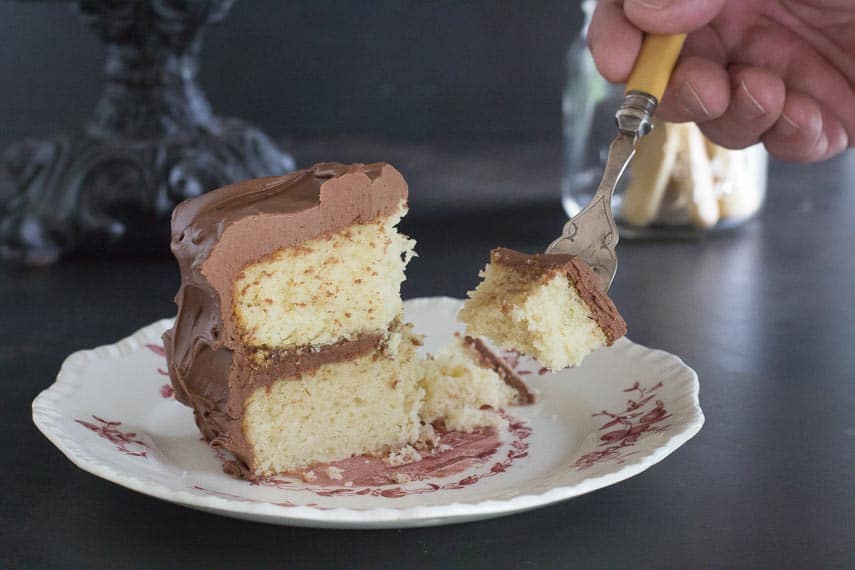
Baking low FODMAP treats and sweets can flow smoothly if you have what you need at hand. With the ingredients discussed here you will be ready to make the great majority of all of our desserts and sweets. While it is important to use the ingredients called for in all low FODMAP recipes (to ensure FODMAP content), it is especially important when baking as your final results will suffer in texture, flavor – and possibly even yield – if you substitute.
While it is important to use the ingredients called for in all low FODMAP recipes (to ensure FODMAP content), it is especially important when baking as your final results will suffer in texture, flavor – and possibly even yield – if you substitute.
Check out our articles on 8 Essential Low FODMAP Refrigerator & Freezer Items, Top Kitchen Tools For Cooking Low FODMAP and 12 Essential Low FODMAP Pantry Items.
Since you are a baker, our ebook, Low FODMAP Baking is geared towards folks like you! It contains over 275 pages of original recipes and tips and tricks not found elsewhere, including an entire section on substitutions.
Click Here To Buy For $3.99
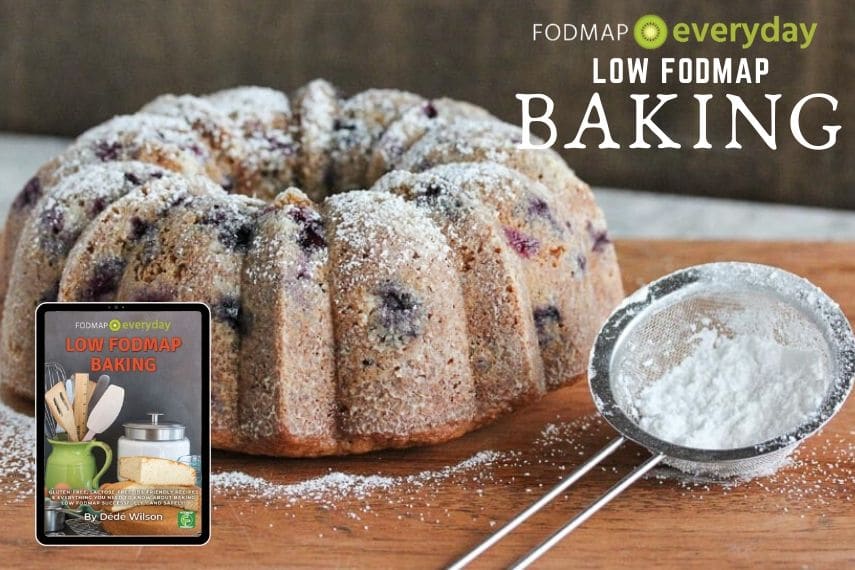
And be sure to check out our Shopping Lists which have thousands of low FODMAP food items curated by our Monash University trained RDs.
Be sure to check out all of our low FODMAP products in our Shop curated just for you!
